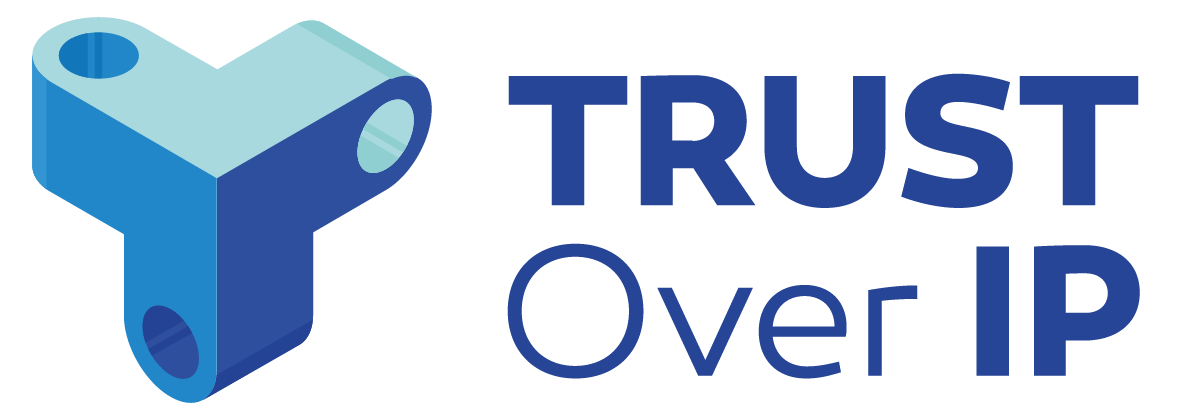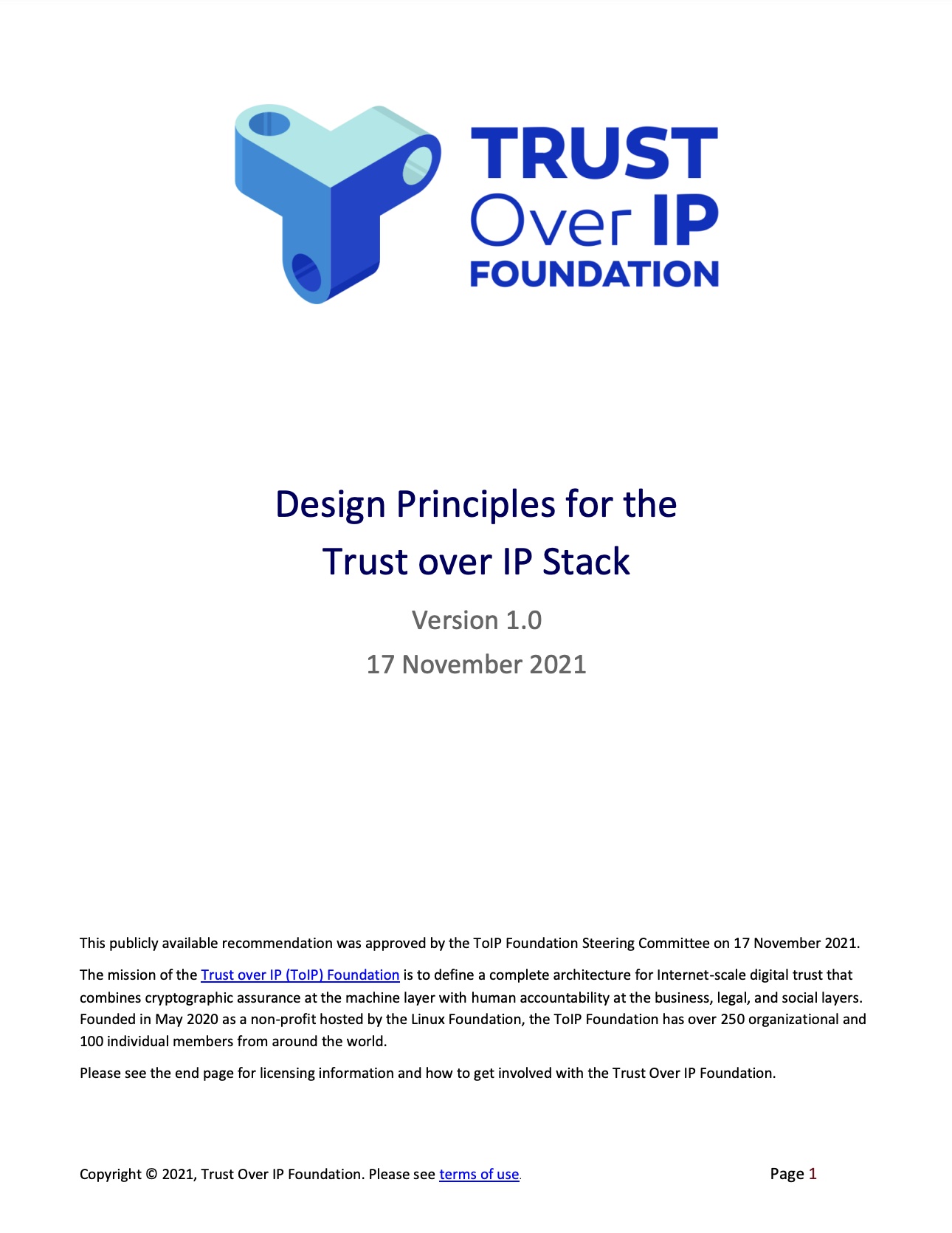Computer Network Architecture (“Dry Code”) Principles
 #1: The End-to-End Principle
#1: The End-to-End Principle
For maximum utility and adaptability, the best place to put intelligence and processing is at the endpoints of a network and not in the communications subsystems (routers, gateways, etc.) that connect those endpoints.
 #2: Connectivity Is Its Own Reward
#2: Connectivity Is Its Own Reward
If connectivity is held up as the highest goal—as it was with the design of the Internet—then every design decision about the ToIP stack will be made in favor of interoperability.
 #3: The Hourglass Model
#3: The Hourglass Model
In a layered protocol architecture, the most successful design takes an hourglass shape where a single “spanning layer” in the middle connects a family of higher-level application-facing protocols with a family of lower-level transport protocols.
 #4: Decentralization by Design and Default
#4: Decentralization by Design and Default
To be trusted by all parties, a global network cannot favor any single centralized service or authority; it must allow functionality and authority to be distributed as widely as possible.
 #5: Cryptographic Verifiability
#5: Cryptographic Verifiability
As part of digital trust, messages and data structures exchanged between parties should be verifiable as authentic using standard cryptographic algorithms and protocols.
 #6: Confidentiality by Design and Default
#6: Confidentiality by Design and Default
Parties communicating over ToIP protocols should expect communications to be secure, private, and confidential without any special thought or action required on their part.
 #7: Keys at the Edge
#7: Keys at the Edge
To maximize security, privacy, and confidentiality, cryptographic private keys should be stored at the edges of the network, not on intermediate nodes.
Human Network Architecture (“Wet Code”) Principles
 #8: Trust is Human
#8: Trust is Human
Trust is a psychological belief held by people who individually or collectively need to act on that belief in order to make risk decisions.
 #9: Trust is Relational
#9: Trust is Relational
Trust is a relationship between a subject—a person or a group of people—and an object—which can be anything about which the subject needs to make a trust decision.
 #10: Trust is Directional
#10: Trust is Directional
While many trust relationships are bi-directional, each direction is independent. In other words, if A trusts B, it does not mean B trusts A.
 #11: Trust is Contextual
#11: Trust is Contextual
A trust relationship exists in a specific context, and it should not be assumed outside of that context. In other words, if A trusts B in context X, it does not mean A trusts B in context Y.
 #12: Trust has Limits
#12: Trust has Limits
In the human perception of trust, every trust decision has a trigger point along a continuum that ends at a limit point. The limit point where risk exceeds reward.
 #13: Trust can be Transitive
#13: Trust can be Transitive
If a first party trusts a second party who in turn trusts a third party in the same context, then the first party can have some degree of trust in the third party in that context.
 #14: Trust and Technology have a Reciprocal Relationship
#14: Trust and Technology have a Reciprocal Relationship
Technology can only help humans build trust if humans trust the technology.
Overall Principles
 #15: Design for Ethical Values
#15: Design for Ethical Values
The ToIP Stack has a strong ethical dimension. Design it with a commitment to ethical values.
 #16: Design for Simplicity
#16: Design for Simplicity
The simpler the design of a protocol, the more likely it is to be successful.
 #17: Design for Constant Change
#17: Design for Constant Change
The only constant on the Internet is change. Design for it.

